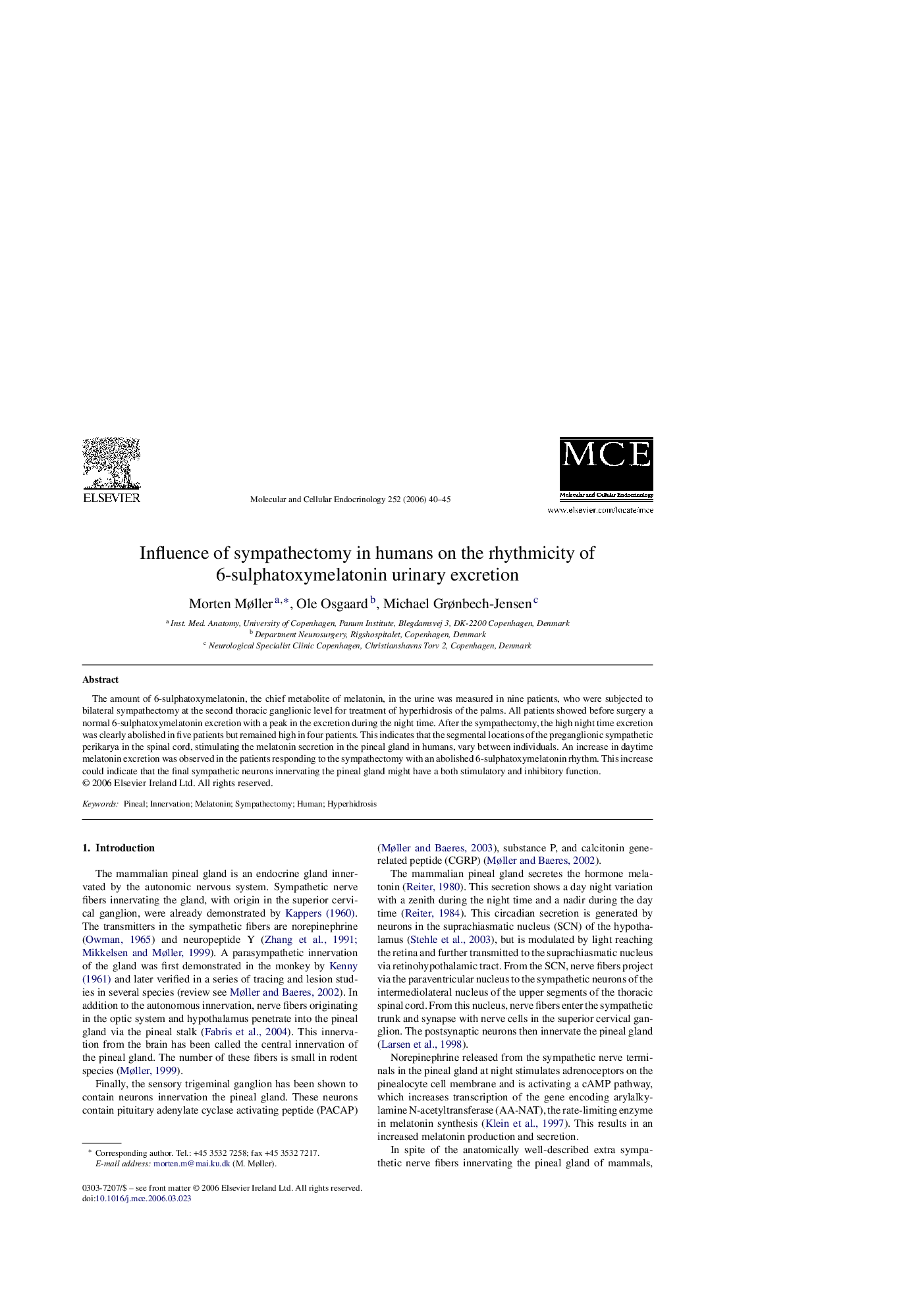| Article ID | Journal | Published Year | Pages | File Type |
|---|---|---|---|---|
| 2198202 | Molecular and Cellular Endocrinology | 2006 | 6 Pages |
The amount of 6-sulphatoxymelatonin, the chief metabolite of melatonin, in the urine was measured in nine patients, who were subjected to bilateral sympathectomy at the second thoracic ganglionic level for treatment of hyperhidrosis of the palms. All patients showed before surgery a normal 6-sulphatoxymelatonin excretion with a peak in the excretion during the night time. After the sympathectomy, the high night time excretion was clearly abolished in five patients but remained high in four patients. This indicates that the segmental locations of the preganglionic sympathetic perikarya in the spinal cord, stimulating the melatonin secretion in the pineal gland in humans, vary between individuals. An increase in daytime melatonin excretion was observed in the patients responding to the sympathectomy with an abolished 6-sulphatoxymelatonin rhythm. This increase could indicate that the final sympathetic neurons innervating the pineal gland might have a both stimulatory and inhibitory function.
